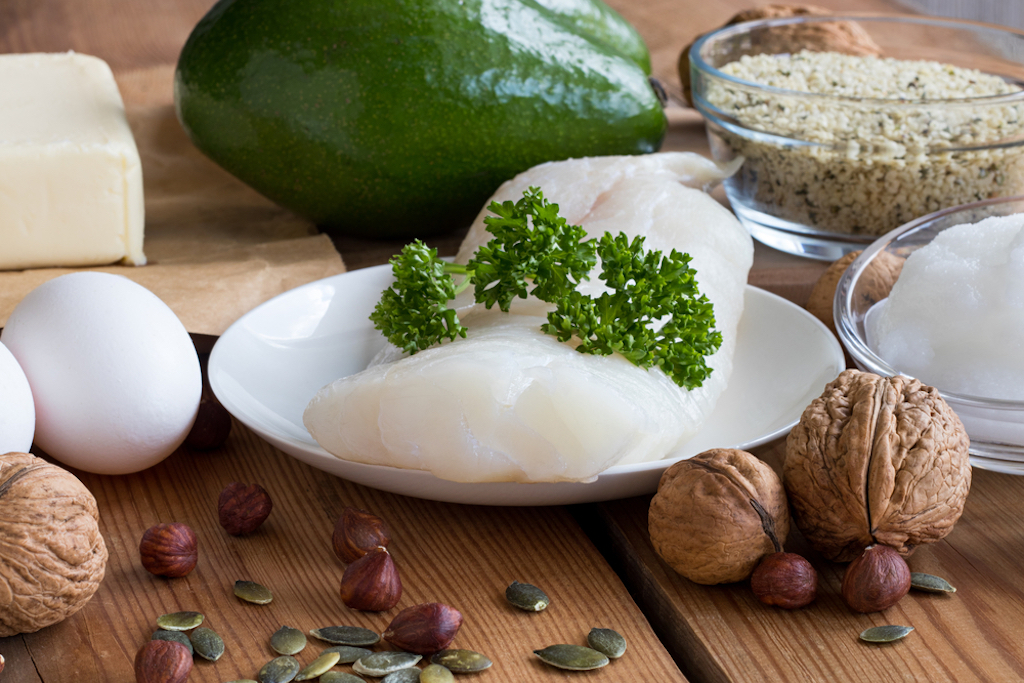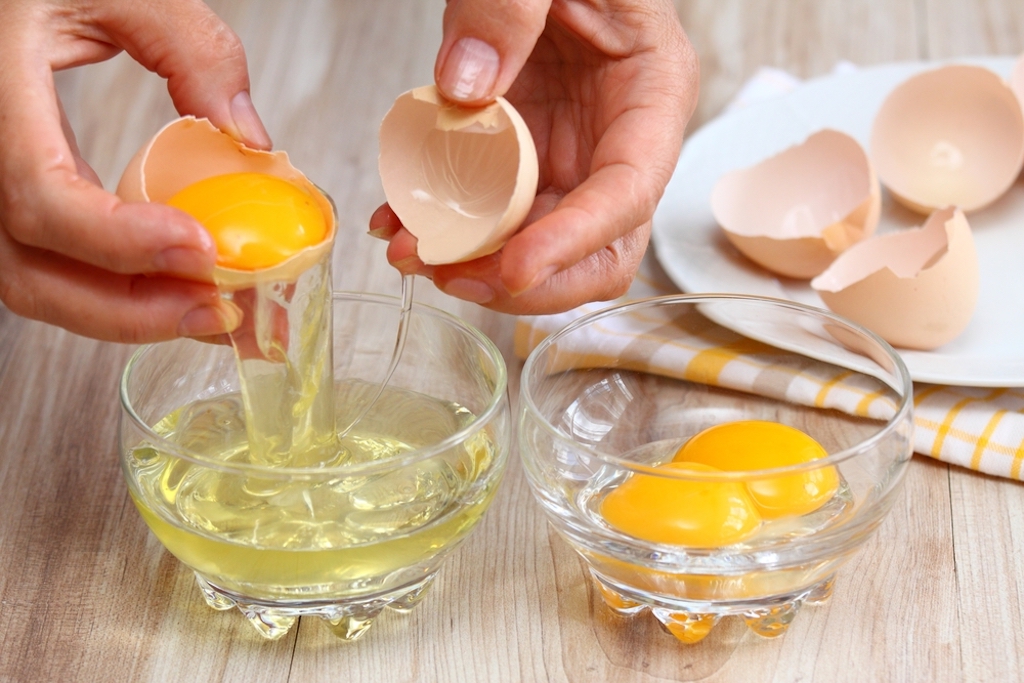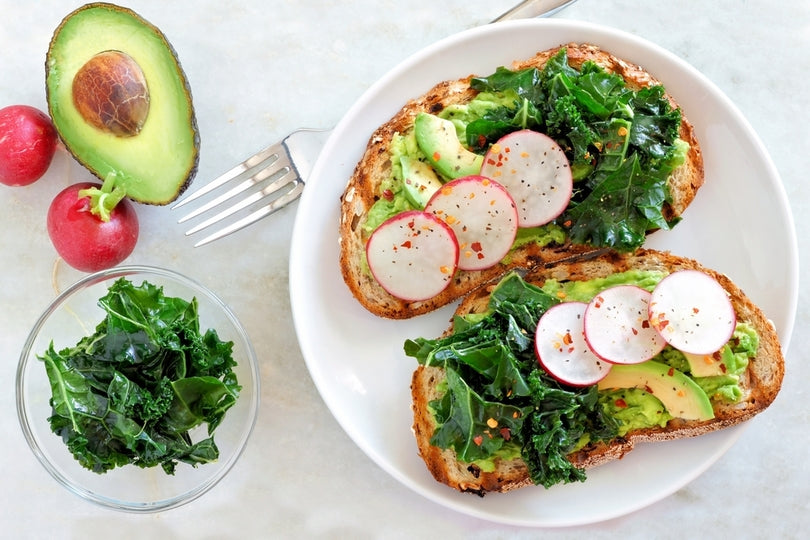The Truth Behind Fat Free Foods


On any grocery shopping trip, you are likely to see a range of fat free foods on the shelves.
While it can be tempting to ignore the grocery list to load up on snacks and convenience meals that are labelled as fat free, often these foods aren’t actually healthier options. In a lot of cases, despite clever marketing, these foods aren't healthy snacks or healthier choices. In fact they may use ingredients that can be worse for you than a little bit of fat.
Before I explain which fat free foods you should try to limit in your diet, let’s get clear about some of the different types of fats that are found in food.
Jump to:
Types of fats
While we often think of fat as being a bad thing, fats are actually an essential part of our diet. With that in mind, there are some types of fats that are healthier than others.
There are four types of fats: saturated, monounsaturated, trans fats and polyunsaturated fats. Each type of fat has a different structure and it has different physical properties — which is why some are better for different cooking methods.
Now, even though some types of fats can be classified as ‘healthy fats’, it’s important to remember that fat is higher in energy than other nutrients. That means if you are eating large amounts of fats (including healthy fats), it can contribute to weight gain.
So, which fats are classified as healthy and which are unhealthy?
Healthy fats
There are two main types of fats classified as ‘healthy fats’ — monounsaturated fat and polyunsaturated fat.

Monounsaturated fat
When eaten in moderation, monounsaturated fats can have a positive effect on your heart as they can help to reduce bad cholesterol levels in your blood.
Foods that are rich in monounsaturated fats are:
- Olives
- Olive oil and olive-based spread
- Peanut oil
- Avocado
- Nuts and seeds.
Replacing saturated fats in the diet with monounsaturated fats can help to lower levels of cholesterol.

Polyunsaturated fat
Polyunsaturated fats can also help to reduce bad cholesterol levels in your blood, which can reduce your risk of developing heart disease and stroke. Oils which are rich in polyunsaturated fats can also add Vitamin E to your diet, which is an important antioxidant. Like monounsaturated fats, polyunsaturated fat should replace the saturated and trans fat in your diet. One type of polyunsaturated fat which is particularly beneficial for your heart is omega-3 fatty acids, found in oily fish. Foods that are particularly rich in polyunsaturated fats are sesame and sunflower oils, salmon and other oily fish, flaxseeds and walnuts.
Foods containing polyunsaturated fat include:
- Oily fish, such as salmon
- Flaxseeds, pumpkin seeds
- Walnuts, pine nuts and brazil nuts
- Sesame and sunflower oils and spreads.
When eaten in place of saturated fats, polyunsaturated fats can reduce your risk of heart disease.
Unhealthy fats
Unlike the healthy fats mentioned above, these varieties of fat don’t provide your body with many benefits.

Saturated fat
This is the type of fat that mainly comes from animal sources of food. That can include meat products and full-fat dairy products like cheese and yoghurt.
Saturated fat may raise your LDL (bad) blood cholesterol levels, which in turn, may increase your risk of heart disease. Eating too much saturated fat may also put you at increased risk of developing type 2 diabetes.
However, your body does need small amounts of saturated fat as it uses this for healthy brain and lung function, liver health and to support the immune system.

Trans fats
To create trans fats, first, the oil being used must undergo a process called partial hydrogenation.
This makes the oils easier to cook with and less likely to spoil than naturally occurring oils (such as olive or sesame oil). Trans fats are often found in deep fried or fast foods, biscuits and pastries, snack foods and hard margarine.
Eating foods with trans fats can not only increase the levels of LDL (bad) cholesterol, they can also decrease the levels of HDL (good) cholesterol — which can increase your risk of heart disease.
Trans fats can occur naturally in some foods, such as beef, lamb and dairy foods but only in very, very small amounts.
Fat free foods
Fat free foods were created in order to ease the mind of consumers who were worried about their weight, having been told they need to reduce their fat intake to stay healthy.
There are two kinds of fat-free foods — those which are naturally fat free and those which have undergone processing or manufacturing to remove the fat.
Fat free food can be lacking in flavour because fat is known to be palatable. Fat increases the taste and the texture of food, so when it is removed, manufacturers usually add other ingredients to compensate. Fat free food may contain ingredients like starches, flours, gums or artificial sweeteners to compensate for the removal of the fat. The problem with this is these types of ingredients do not have any nutritional value and can sometimes increase the calorie content of the food.
Natural fat free foods
There are lots of foods that are naturally fat free but also provide your body with beneficial nutrients or fibre. Eating these foods can be helpful for satiety, while also providing your body with essential nutrients.
Check out this list of fat free foods that also provide health benefits:

Vegetables
Naturally fat free, including more vegetables into your diet also provides your body with key nutrients.
Leafy greens such as spinach, lettuce, kale and silverbeet (chard) are considered fat free but they contain a number of beneficial nutrients. In addition to helping to reduce inflammation in the body, leafy greens provide calcium, potassium and vitamins A and K.
To keep your vegetables fat free, use them raw in salads or try steaming or sauteing with your favourite herbs.

Whole fruits
Almost all fruits are low in fat but contain fibre, vitamins and minerals.
Fruit is also a source of antioxidants, which can help to guard against free radicals, molecules which can cause damage to the cells in your body. Eating a diet high in fruits and vegetables can help to reduce the damage from free radicals.
While fruit is low in fat, it does contain fructose, a natural sugar. Try to stick to the recommended two serves of fruit a day to ensure you aren’t getting too much sugar.
Fruit is most beneficial when you eat it whole but smoothies are also a great way to enjoy more fruit.

Egg whites
We already know that eggs provide our bodies with protein, vitamins and minerals. What you may not know is that egg whites are a naturally fat free food.
Removing the yolk from an egg removes the fat and cholesterol — so you have a fat-free protein source.
You can use egg whites to make omelettes with your favourite vegetables.

Wholegrain oats
In their natural state, many grains are fat free. With wholegrain products, these have usually undergone minimal processing, which means they are unlikely to have anything added to increase the flavour.
Wholegrain oats provide the body with slow burning energy while helping to keep you feeling full for longer.

Legumes and beans
Chickpeas and lentils are valuable vegetarian protein sources and they are fat free foods too!
Providing your body with fibre, legumes and beans can help to increase healthy bacteria in the gut.
Lentils and chickpeas can be easily mixed into soups and stews to add bulk.

Herbs and spices
Unlike sauces and dressings, herbs and spices are fat free ways to add flavour to your dishes.
Using herbs and spices allows you to control the flavour to your liking, but it also means you can avoid relying on processed or store-bought sauces and dips. Not only can this help to reduce your fat intake but it can also cut back the refined sugar in your diet.
Should I remove fat from my diet?
A balanced diet should include a small amount of healthy fat. The healthy fats in your diet can also help your body to absorb certain vitamins. Your body needs a small amount of healthy fats for producing hormones, promoting healthy skin and cushioning your organs.
While the list of fat free foods above is full of healthy choices, keep in mind that many store-bought foods marked as fat free may contain high amounts of salt, sugar and fillers.
Just because a food is ‘fat free’ does not mean it’s automatically healthy. In some cases, it may be healthier to choose the full fat or low-fat option in order to get more nutritional value.

When is it better to choose low-fat or fat free foods?
To help control the amount of fat in your diet, there are some times when it may be worthwhile to choose low fat options. For example, you may have noticed that many of my recipes use low-fat milk — that is because of the type of fat these foods contain.
Choose full fat options when the food contains healthy unsaturated fats (such as avocados or nut butter). Try to choose reduced fat or lean options for foods that contain naturally occurring saturated fats, such as dairy or meats.
With lean meats, you can then control the amount of fat used during the cooking process — olive oil is a healthier option that is also an unsaturated fat.
That’s a quick guide to fats and fat free food
So there you have it, ladies! Now you know that not all fat-free foods are equal.
I hope this blog post has helped you to understand why it can be beneficial to include fats in your diet — so long as most of them are the healthy kind.
Remember, including a variety of foods in your meals and overall diet is one of the best ways to ensure you are getting the fat you need while also getting a balance of essential minerals and vitamins too.
Love, Kayla xx
* Disclaimer: This blog post is not intended to replace the advice of a medical professional. The above information should not be used to diagnose, treat, or prevent any disease or medical condition. Please consult your doctor before making any changes to your diet, sleep methods, daily activity, or fitness routine. Sweat assumes no responsibility for any personal injury or damage sustained by any recommendations, opinions, or advice given in this article.




<#= c.user.username #><#= moment(c.created_at * 1000).fromNow() #>
<#= c.html_body #> <# if (c.images) { #>
<# } #>